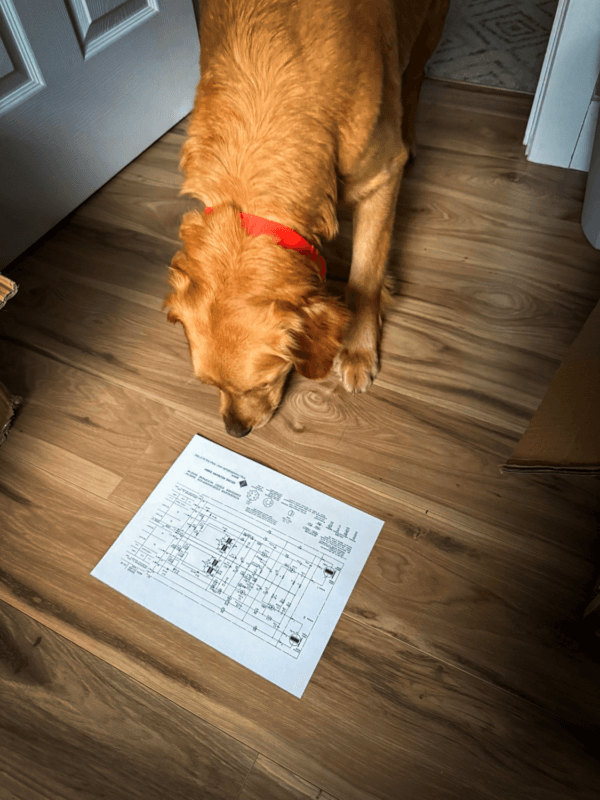Audient has recently discovered that super high-end manufacturer Vanguard Audio Labs uses EVO 8 to help design, repair and test their microphones.
These are no ordinary mics. The design team at Vanguard Audio Labs produces high-quality, affordable studio mics used by artists, engineers and producers across the world, including Taylor Swift, Herbie Hancock, Robert Plant, Randy Bachman, Buddy Miller and many more.
All Vanguard Audio Labs microphones undergo rigorous testing, and a couple of the top-of-the-line products command four-figure ($) sums, so Audient was intrigued to find out how the humble 4 channel EVO 8 audio interface fits into the process.
We caught up with ‘accidental CEO’ (Chief Everything Officer) and self-professed giant mic nerd, Derek Bargaehr in California to find out more. Over to you Derek!
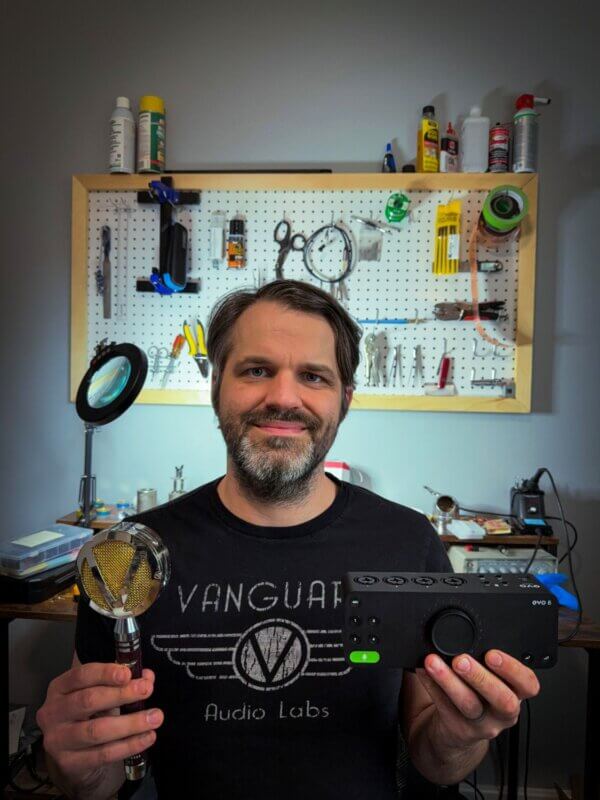
Briefly describe what you do…
I design, build and repair recording microphones – mostly of the condenser variety.
…and why do you need an audio interface to help you do it?
I need to be able to run repeatable tests on microphones, including circuit testing and analysis. It needs to sound good, be reasonably low-noise and be versatile and reliable.
“versatile and reliable”
How did you do that before EVO 8 came on the scene?
I used a combination of analog gear and inexpensive interfaces, many of which I accidentally exploded while probing high voltage tube circuits. I have a literal pile of the usual “red” interfaces in my closet that I’ve turned into paperweights.
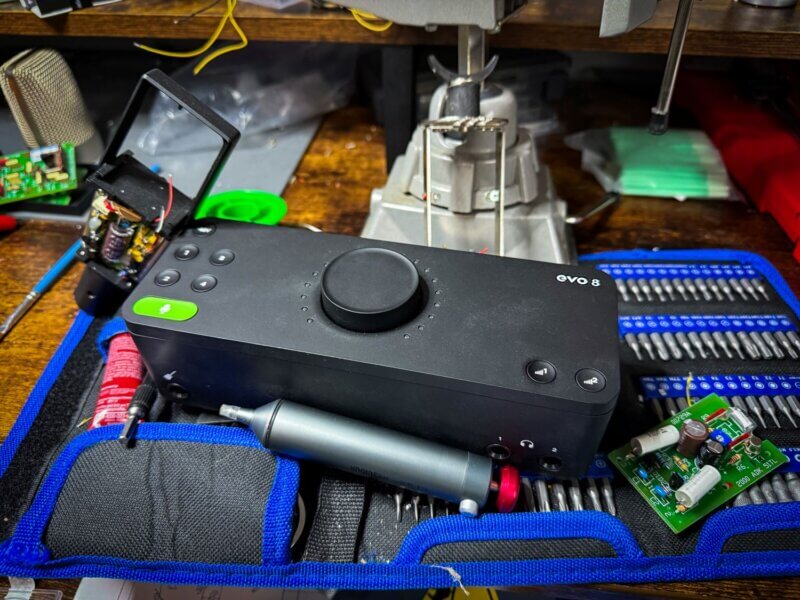
Ah, I see. What was it about EVO 8 that appealed to you?
Being able to gain-match 4 mics at a time, including the integrated gain setting in Logic Pro, has been very helpful for working on stereo microphones and matched pairs (and occasionally, matched pairs of stereo microphones!)
The fact that it’s so cost-effective is also extremely appealing, because I often do signal probe work on high-voltage tube circuits. If you’ve never accidentally injected 300V into a mic preamp, I can assure you that the results can be…messy. Not needing to worry about turning a thousand-dollar interface into a doorstop is good peace of mind.
“The fact that it’s so cost-effective is also extremely appealing”
How is it working out? What features are particularly useful?
Being able to match the gain with a keystroke has been invaluable. Previously, I would have to run a signal generator into each preamp to match them. I also enjoy having tactile buttons and knobs on my gear – some newer interfaces tend to eschew that for cost savings, but there’s something nice about the click of a good button or the detents on a rotary encoder.
Is Smartgain a feature you’re into?
It has been useful for guesting on podcasts, etc. For repairs I don’t tend to use Smartgain as I’m often listening at different levels. I’ll crank the gain to near maximum to listen for circuit noise, then back it way down to test pads/rolloffs or to test for capsule contamination on an extremely close vocal.
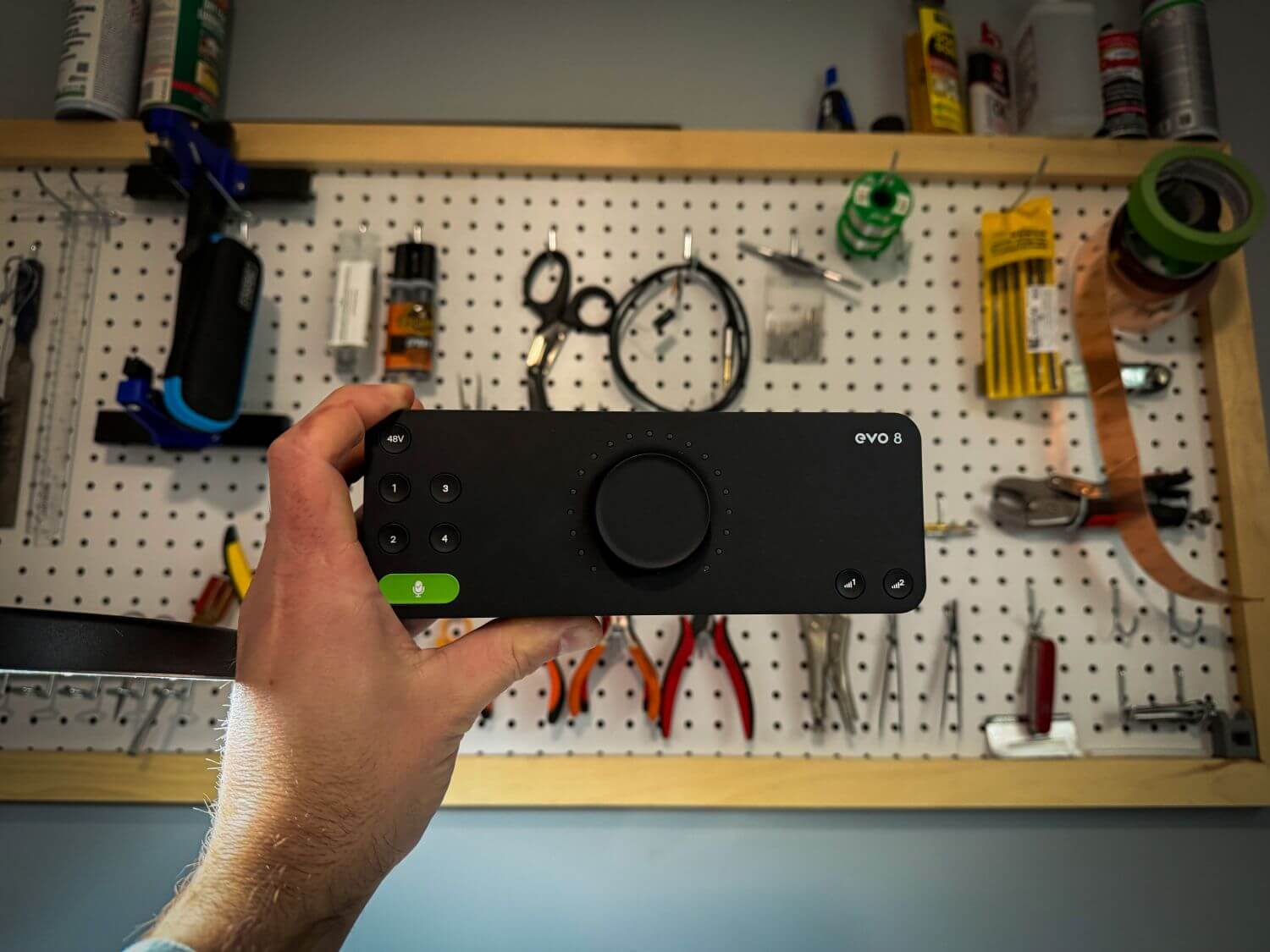
Is there anything else about EVO 8 that stands out to you?
I really like how compact it is. I do my mic repair work out of a small 10’ x 10′ home office, and not having a mess of cables or the need for a side rack has been nice.
The front Hi-Z has also been useful for connecting my signal probe. Having the hardware buttons to quickly mute channels or swap monitoring devices has been helpful as well. It seems like the engineers who developed the EVO series really tried to think about what would be useful to have within easy reach for an engineer, producer or artist – and that lines up pretty well with what a microphone tech would need as well.
“Having the hardware buttons to quickly mute channels or swap monitoring devices has been helpful”
Are you using EVO 8 to test everything that comes across your desk?
Mostly I use the EVO 8 to work on the vintage mic repair work that I do. When I’m doing development work for Vanguard, the EVO 8 helps me quickly test prototype circuits; having 4 preamps and being able to switch between 4 variants simultaneously has been helpful on a couple occasions.
What is the most exclusive or luxury microphone that EVO 8 has helped you test??
I’m currently rebuilding a vintage Neumann M49 and U67 for a client and have been using the EVO 8, and servicing an original first-version AKG C414 for another. I also did an AKG C24 mk1 a while back, too.
All sorts of amazing vintage and modern mics have run through this preamp, from Neumann, AKG, Schoeps, Gefell, Bock, Soundelux, Electro-Voice, and more…I also recently used it to work on a rather expensive piece of rack gear – a PAL Plus mk1 from Requisite Audio. I’m sure it will see even more beautiful vintage gear as my repair work continues.
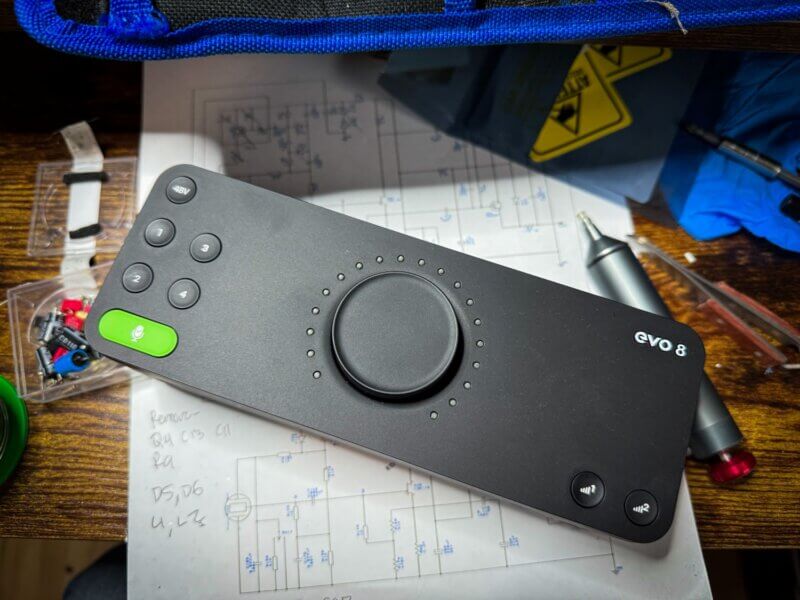
Will you be needing any more EVO 8s…?
I’m sure I’ll eventually accidentally blow this one up. I’m also hoping to build a few compact testing rigs for Vanguard and will need interfaces for that, and I will definitely be considering the EVO series.
Excellent. Keep us posted! In the meantime, when can we find Vanguard Audio Labs – and you – online?
Vanguardaudiolabs.com and shop.vanguardaudiolabs.com if you like buying direct, which helps me feed my foster dogs.
You can find me making ridiculously niche audio memes and explaining audio electronics (and occasionally posting about our mics too) at @vanguardaudiolabs on Instagram.
And if you need any condenser mics repaired, fill in this online form and I’ll get straight back to you!
Great! Thanks for the chat Derek. And try not to blow up the EVO 8 just yet….
